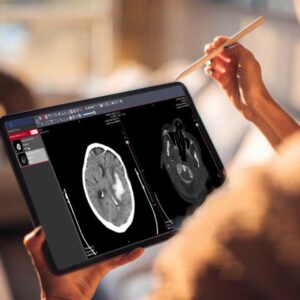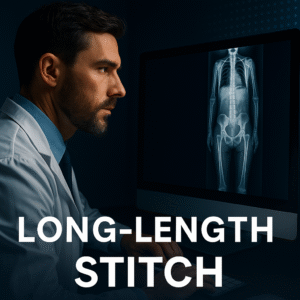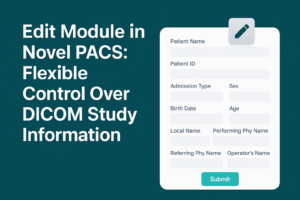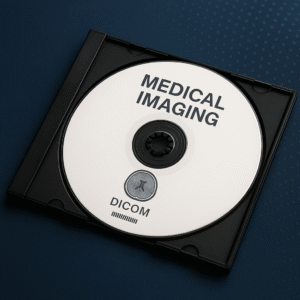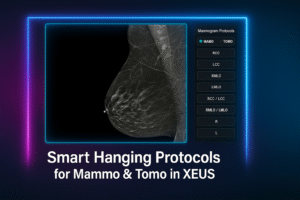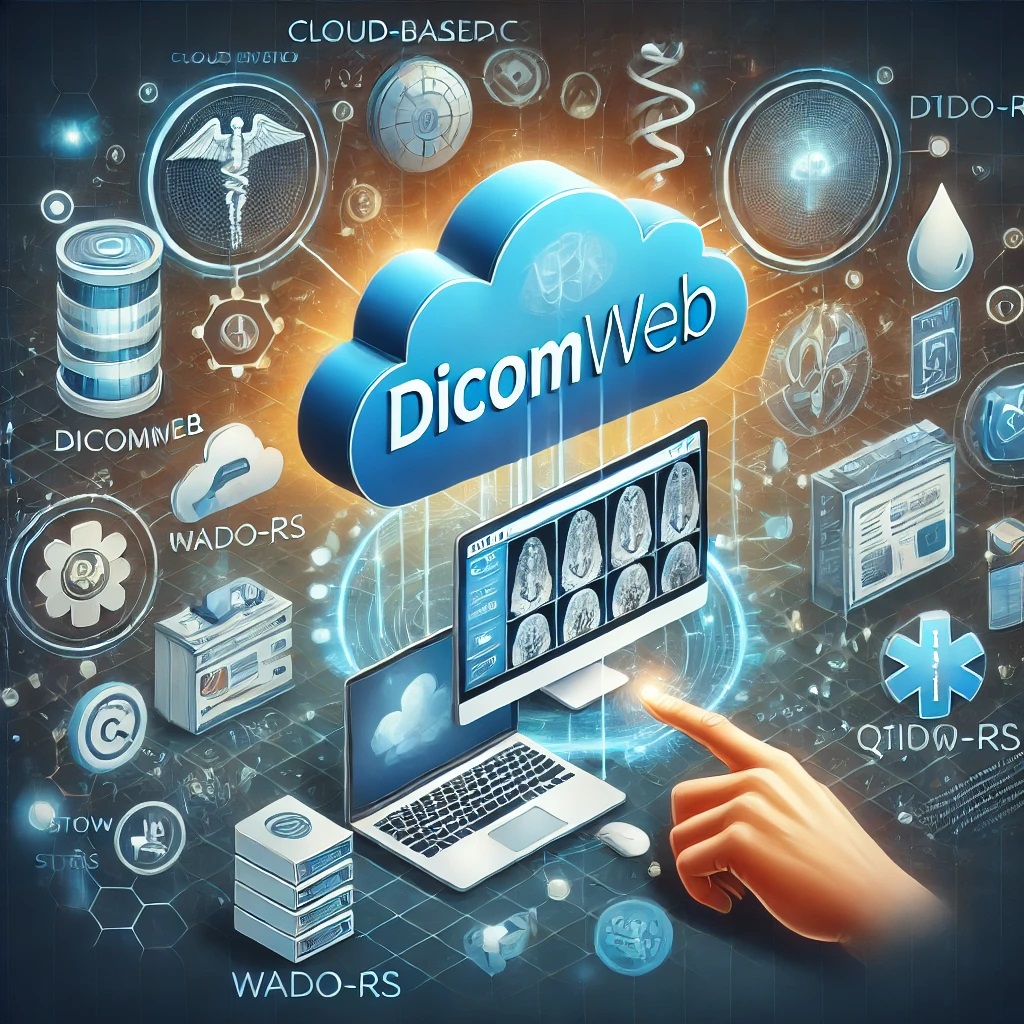As medical imaging continues to evolve, so does the need for accessible, efficient, and interoperable solutions. DICOM, the global standard for medical imaging, has been instrumental in enabling the storage, transmission, and display of medical images across different platforms. However, with the advent of cloud computing and the increasing need for web-based applications, DICOM has expanded its capabilities with DICOMweb. This blog post will explore what DICOMweb is, its features for displaying images on the web, DICOM Networking Protocols, and the recent innovations driving this technology forward.
What is DICOMweb?
DICOMweb is a set of RESTful web services defined as part of the DICOM standard that enables the storage, retrieval, and viewing of medical images over the internet. Unlike traditional DICOM, which relies on more complex networking protocols like DICOM C-STORE and C-FIND, DICOMweb leverages widely used web technologies such as HTTP, JSON, and RESTful APIs. This makes it easier to integrate DICOM into web-based applications, thereby expanding the accessibility of medical imaging data.
DICOMweb is designed to facilitate the seamless sharing and viewing of medical images across different platforms, including desktops, tablets, and mobile devices. It allows healthcare providers to access medical images anytime, anywhere, thus improving patient care by enabling more timely and informed decision-making.
Key Features of DICOMweb for Web-Based Image Display
-
RESTful APIs
At the heart of DICOMweb are RESTful APIs, which allow for simple and efficient communication between web clients and servers. These APIs provide a standardized way to query, retrieve, and store DICOM data over the web. This simplicity makes DICOMweb easier to implement and integrate with existing healthcare IT systems compared to traditional DICOM networking protocols.
-
Web-Enabled Image Viewing
One of the primary use cases for DICOMweb is web-enabled image viewing. With DICOMweb, medical images can be displayed directly in a web browser without the need for specialized software. This is achieved through the use of web technologies such as HTML5 and JavaScript, which allow for interactive and responsive image viewers that can run on any device with a modern web browser.
-
Interoperability and Standards Compliance
DICOMweb is fully compliant with the DICOM standard, ensuring that it can interoperate with traditional DICOM systems. This means that images stored and retrieved via DICOMweb are fully compatible with existing DICOM archives and viewers. Moreover, DICOMweb supports various image formats, including JPEG, JPEG 2000, and PNG, allowing for flexible and efficient image display.
-
Scalability and Cloud Integration
DICOMweb is designed to be scalable, making it well-suited for cloud-based deployments. This scalability allows healthcare organizations to store and access large volumes of medical images without the need for expensive on-premises infrastructure. Cloud integration also enables seamless sharing of images between different institutions, facilitating collaborative care and research.
-
Security and Privacy
DICOMweb includes robust security features to protect patient data. It supports HTTPS for secure data transmission, ensuring that medical images and patient information are encrypted while in transit. Additionally, DICOMweb can be integrated with authentication and authorization systems to ensure that only authorized users have access to sensitive medical data.
DICOM Networking Protocols
DICOM networking protocols have been the backbone of medical image transmission for decades. These protocols, which include DICOM C-STORE, C-FIND, C-MOVE, and C-GET, are essential for the reliable exchange of medical images between different systems. DICOMweb complements these traditional protocols by offering a more modern and web-friendly approach to image sharing.
-
DICOM C-STORE is a protocol used to store medical images on a PACS (Picture Archiving and Communication System) or another DICOM-compliant storage system. It allows images to be sent from a modality (such as an MRI or CT scanner) to a storage server for archiving and later retrieval.
-
DICOM C-FIND is used to query a DICOM database for specific images or other information. For example, a radiologist might use C-FIND to search for all images associated with a particular patient or study. This protocol is essential for locating images within large DICOM archives.
-
DICOM C-MOVE and C-GET are protocols used to retrieve images from a DICOM archive. C-MOVE instructs the archive to send the images to a specified destination, while C-GET retrieves the images and returns them to the requesting application. These protocols are essential for transferring images between different systems or locations.
Recent Innovations in DICOM Networking and DICOMweb
As the demand for web-based and cloud-enabled medical imaging solutions grows, DICOMweb has seen several innovations that enhance its functionality and usability.
-
WADO (Web Access to DICOM Persistent Objects) is a DICOMweb service that allows for the retrieval of DICOM objects over the web. WADO-RS (RESTful) and WADO-URI are two approaches to implementing this service. WADO-RS is more flexible and allows for the retrieval of images, metadata, and other DICOM objects in a more granular way. WADO-URI, on the other hand, provides a simpler method for retrieving entire DICOM studies or series. These services make it easier to access DICOM data from web applications.
-
QIDO-RS (Query based on ID for DICOM Objects) is a DICOMweb service that allows for the querying of DICOM metadata over the web. This service is essential for locating specific images or studies within a DICOM archive. STOW-RS (Store Over the Web) is another DICOMweb service that allows for the storage of DICOM objects via a web interface. These services enhance the functionality of DICOMweb by enabling the full range of DICOM operations to be performed over the web.
-
Integration with FHIR
DICOMweb is increasingly being integrated with FHIR (Fast Healthcare Interoperability Resources), a standard for exchanging healthcare information electronically. This integration allows for more seamless interoperability between imaging systems and other healthcare IT systems, such as electronic health records (EHRs). By combining the strengths of DICOMweb and FHIR, healthcare organizations can create more comprehensive and interoperable healthcare IT environments.
-
Cloud-Based PACS
Cloud-based PACS are becoming more common, and DICOMweb is a key enabler of these systems. By leveraging DICOMweb, cloud-based PACS can offer the same functionality as traditional on-premises PACS while providing the added benefits of scalability, cost-effectiveness, and remote accessibility. This shift towards cloud-based solutions is transforming how medical images are stored, accessed, and shared.
-
AI and Machine Learning Integration
Another significant innovation is the integration of AI and machine learning with DICOMweb. By using DICOMweb to access and analyze large datasets of medical images, AI algorithms can be trained to detect patterns and anomalies that may be missed by human observers. This integration has the potential to revolutionize diagnostics and improve patient outcomes by enabling more accurate and timely diagnoses.
Conclusion
DICOMweb represents a significant evolution in the way medical images are accessed and shared. By leveraging web technologies and modern networking protocols, DICOMweb makes it easier to integrate medical imaging with web-based applications, cloud platforms, and other healthcare IT systems. This accessibility is crucial for improving patient care, facilitating research, and enabling the seamless sharing of medical images across institutions.
As DICOMweb continues to evolve, we can expect to see even more innovations that enhance its functionality and interoperability. Future developments may include further integration with FHIR, enhanced security features, and new tools for AI and machine learning.
In future blog posts, we will delve deeper into DICOM-compatible systems, exploring how they work with DICOMweb to create a comprehensive and interoperable healthcare IT environment. Stay tuned for more insights into the world of medical imaging and healthcare technology.
